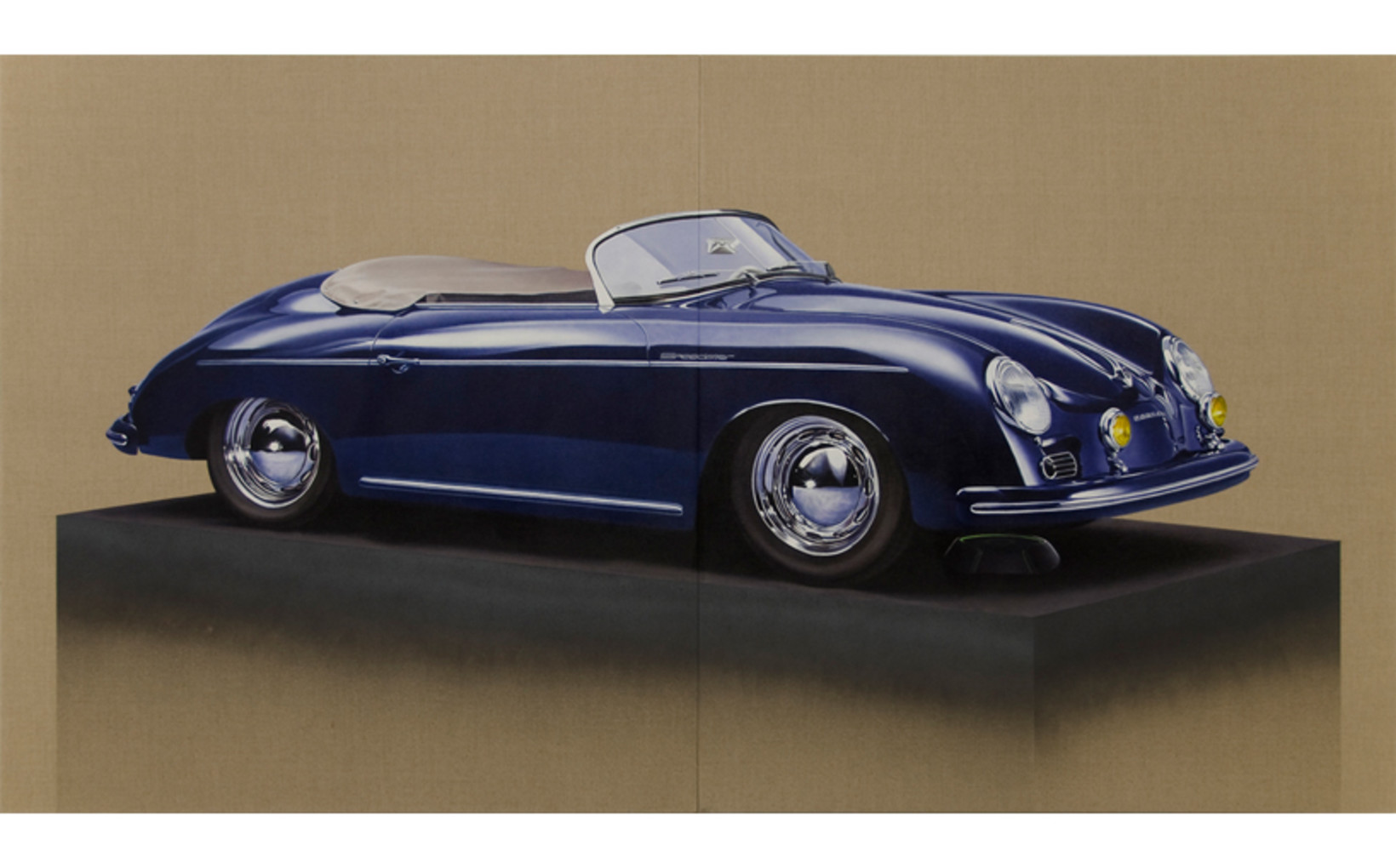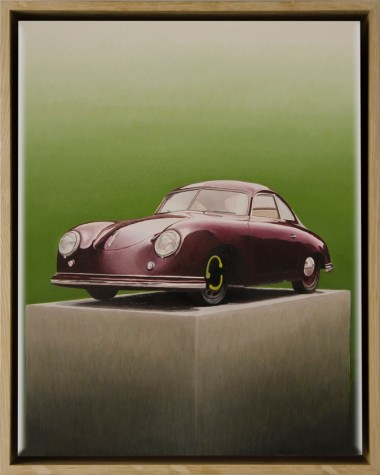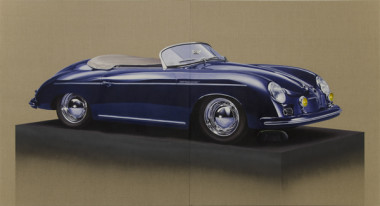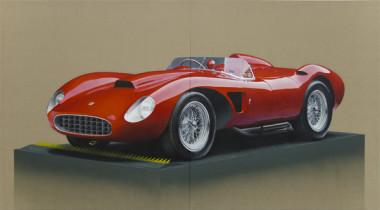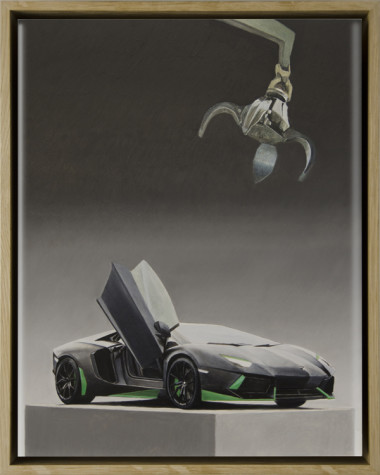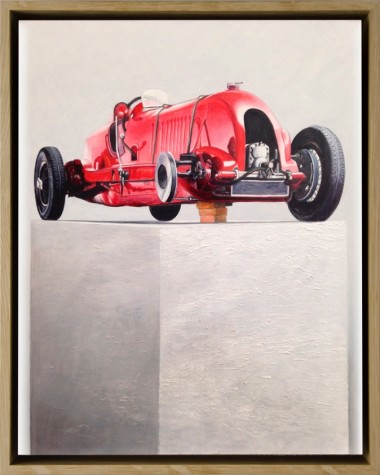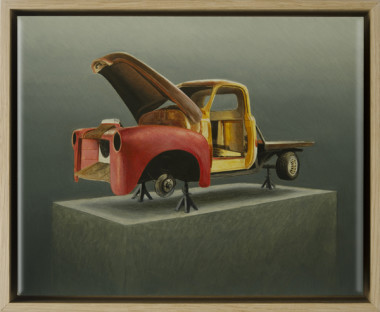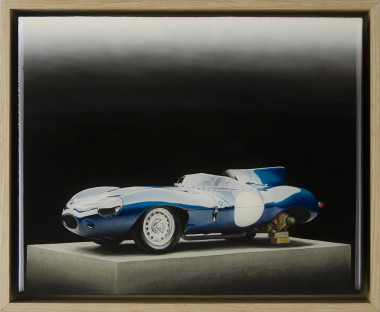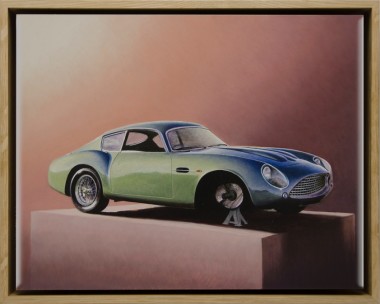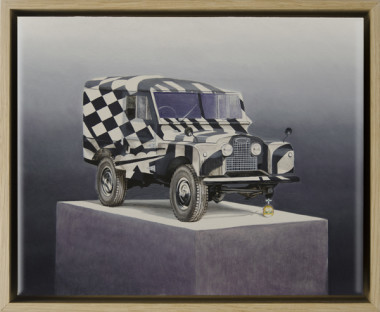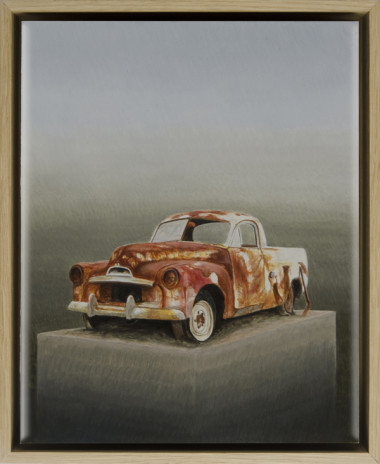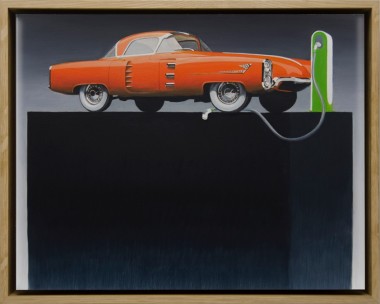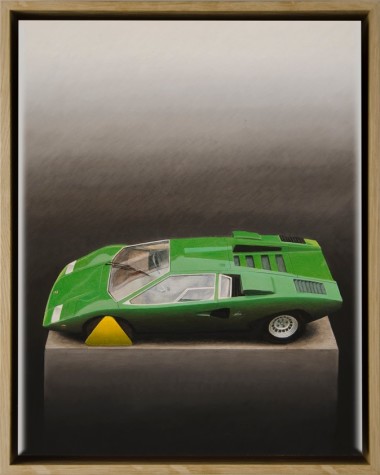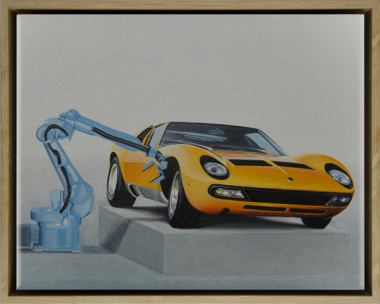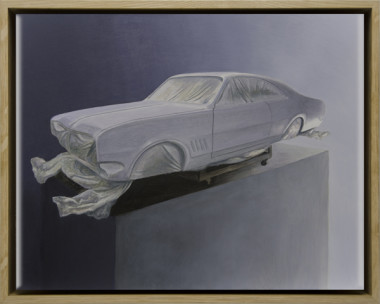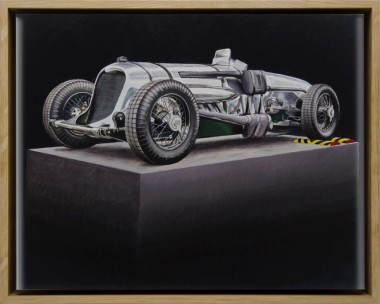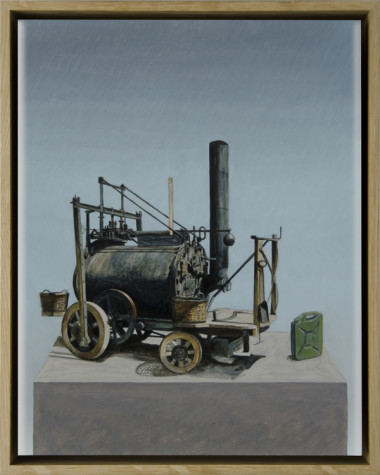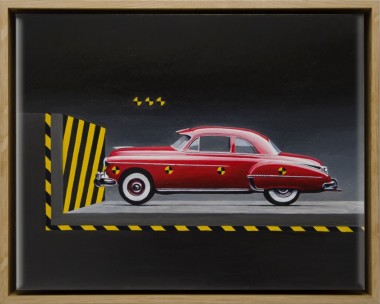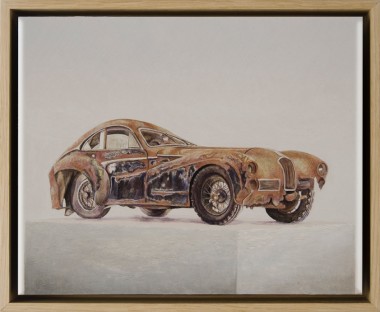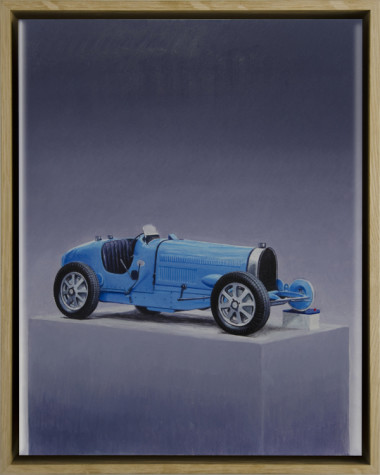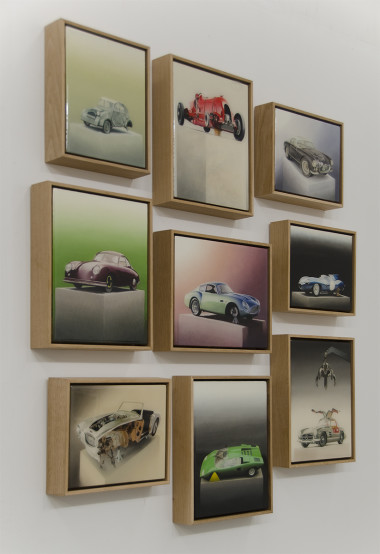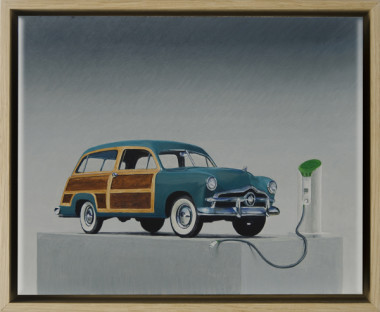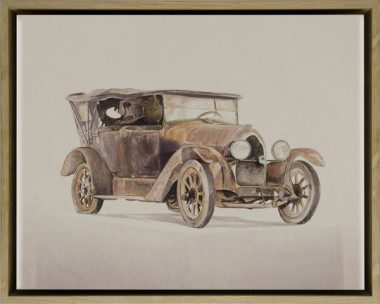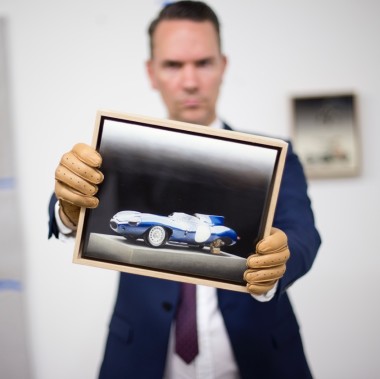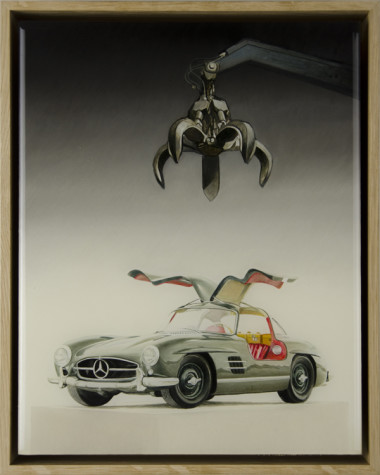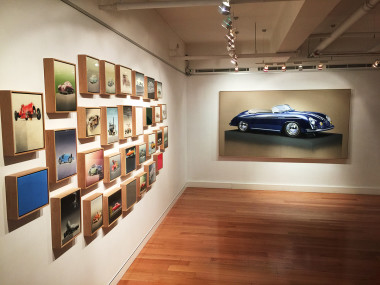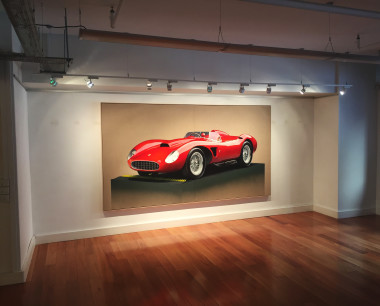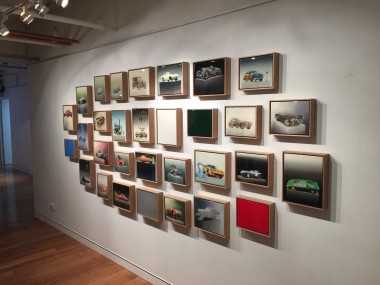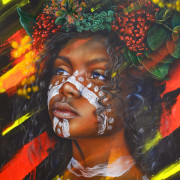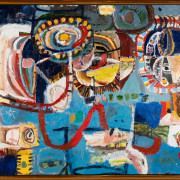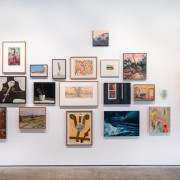Open Road
The ghosts of defunct technologies surround us. Empty shop fronts that were once bookshops and video stores, the niches built to house pay phones in railway stations and the piles of old television sets that line suburban streets like the shells of an extinct species of turtle, all remind us of the slipping away of one technology as it is replaced by something better, newer, faster.
Giles Alexander’s latest suite of paintings are timely reminders of another technology in transition – the motorcar. Since the early 20th century the car and the industries that build, distribute and support them have spread into in an inconceivably vast global network, a web connected by roads both visible and invisible. Alexander’s intricate, realist paintings depict an ancestry of technologies that drive upon them, from the steam cars of the late 19th century and Model Ts of the early 20th, through the mid-century sports cars and family sedans, to military vehicles and super cars of the present era.
All are shown atop a plinth as venerated objects and seen against a neutral background. Alexander’s reference here is to the great equestrian painter of the late 18th century George Stubbs and his acolytes including Alfred Munnings – artists who dutifully produced pictures of their patron’s horses, usually depicted in idealised English countryside or, in the case of one of the finest examples of an atypical work by a famous artist, Stubbs’s Whistlejacket [1762], a life-size painting of a horse commissioned by the Marquess of Rockingham that was painted against a neutral background.
The visual language of depicting cars in TV ads and in magazine spreads draws its iconography in part from such paintings – cars are often depicted against black or white backgrounds and like Stubbs’s painting, the eye has nothing to look at but the fine detail of the object itself. One can draw a parallel to the money in the connections between the passions of rich men past and present, but Alexander also creates a dynamic sense of space between the objects and the canvases upon which they are painted. In the small works Alexander encapsulates the images in a glaze that’s like the sheen of an exquisitely polished duco, but in the twin large paintings the background is not paint but raw canvas. In both approaches it feels as if the cars are objects that compress time and place and hold, as if in aspic, the curious cultural histories and associations contained within them.
As a boy Alexander’s father gave him a model car every year for his birthday – a tradition the artist is carrying on with his own son – and before he settled on being an artist he had pursued his passion by enrolling in a degree in automotive engineering and design. Eventually abandoning the degree but never losing his interest in cars, Alexander invests these works with a curious mix of nostalgia and a clear-eyed critique.
The cars in these paintings are celebrations of design and optimised function, and are desirable objects in their own right, but in their state of veneration they have been what Alexander calls ‘debilitated’ – all are missing wheels or have been clamped, some are skeletons without engines, others are rusted through while still others sit inert awaiting recharging. In one picture a perfectly preserved Mercedes sports car is about to be mangled by a scarp yard claw. This balance between states of utilitarian usefulness and dead objecthood haunt the images.
Nostalgia is sometimes defined as a kind of time sickness, a debilitating fascination with objects and things, very often from an early stage of our own lives, but just as often for some imagined past. Cars exist in the present in a way that defies such logic – where all other consumer technologies seem to have passed away prized examples of automotive engineering can still be seen driving the streets. They are a reminder that cars are essentially the same technology they were a hundred years ago, which is to say, no matter what kind of engine drives them, and no matter what exotic alloy their chassis might be made from, their status in Western society remains undiminished. We expect and demand both their convenience and the empowerment of personal mobility they give us.
Alexander’s paintings ruefully remind us that this nostalgia is literally making us sick – the contribution of their manufacture and distribution and their daily use is a major component of global carbon pollution. And yet these beautiful painted objects are symbolic of our attachment to an entire system that is sending the land beneath the waves, but ironically, may yet save us.
Dr. Andrew Frost
April, 2016
Dr. Andrew Frost is a researcher in science fiction, cinema and contemporary art, the art critic for Guardian Australia and a lecturer in the Dept. Media, Music, Communications and Cultural Studies at Macquarie University, Sydney
